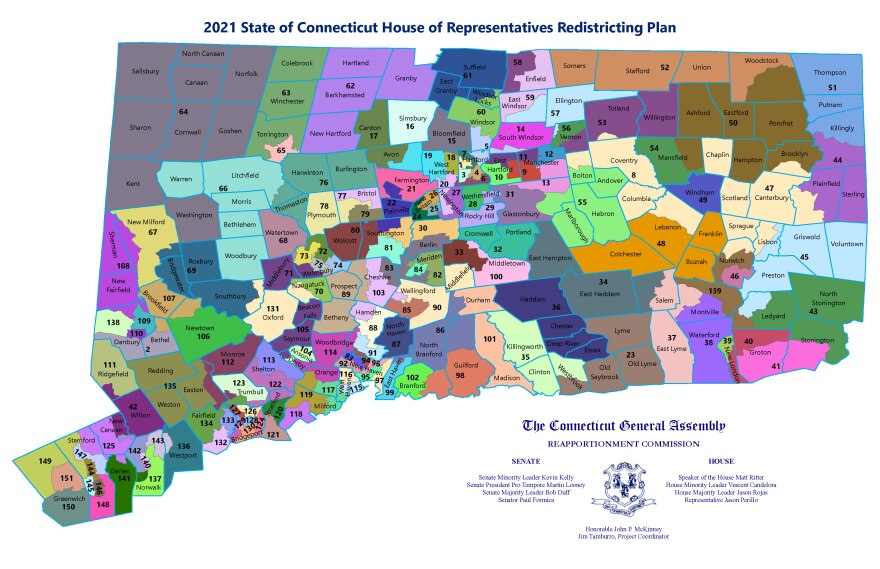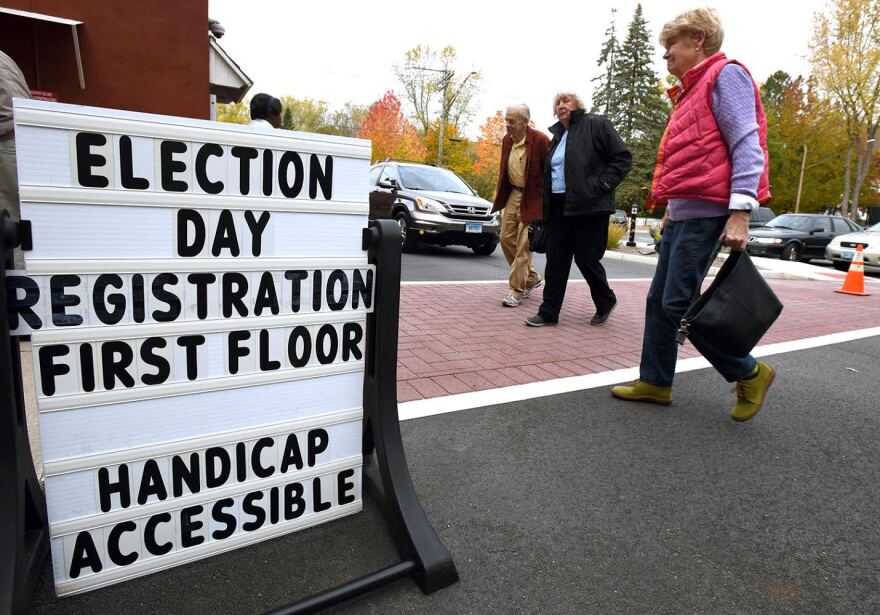Connecticut’s bipartisan Reapportionment Commission adopted new district maps for the state House of Representatives on Thursday, leaving incumbents scrambling to assess the impact on reelection prospects in 2022.
Despite population losses, Hartford appears likely to still control six House seats, thanks to mapmakers crossing the Connecticut River to place 3,282 South Windsor residents in a district represented by Rep. Brandon McGee, D-Hartford.
Stamford, the state’s second-largest and fastest-growing city, picked up a seventh House seat, a reflection of nearly all population growth recorded in the 2020 Census coming in Fairfield County.
No one in the 151-member House was drawn out of their current district, but several face harder races as a result of revisions, most notably a freshman, Rep. Brian Smith, D-Colchester, and a progressive leader, Rep. Anne Hughes, D-Easton.

The closely guarded map was posted on the Reapportionment Commission website after the unanimous vote, giving the public and rank-and-file House members their first glance at Connecticut’s new political terrain.
Hughes, the leader of the House Progressive Caucus, immediately saw that the eastern portion of Easton, near where she lives, now was in a district with neighboring Monroe.
“I just texted as soon as I saw the map, and I was like, ‘I’m still living [in] my district, right?’” Hughes said.
House Speaker Matt Ritter, D-Hartford, the co-chair of the commission, assured her that was the case.
Her 135th district actually got safer for Democrats, but Easton will be a weaker base if she is challenged in a primary by a Democrat from neighboring Weston, which has the bigger share of voters and nominating convention delegates.
Smith, who won a special election in 2020 in the 48th District, succeeding the late Linda Orange, lost a portion of Democratic Mansfield and picked up Bozrah and Franklin. The changes will make the district friendlier to the GOP.
The recently announced retirement of Rep. Whit Betts, R-Bristol, eased the way to accommodate Rep. Cara Pavalock-D’Amato, R-Bristol, who is moving to a new home in Betts’ 78th District.
“It was interesting because Cara would have retired and run possibly in the 78th when Whit retired,” said House Minority Leader Vincent J. Candelora, R-North Branford.
Instead, her 77th District was revised to encompass her new neighborhood in Bristol.
In northeastern Connecticut, the 52nd District of Rep. Kurt Vail, R-Stafford, had to be drawn due to an unusual source of population loss: Inmates no longer are counted where they are imprisoned.
Vail’s district includes Somers, the home of two prisons. To accommodate the population loss, his district now will include Union and a portion of Woodstock.
Lobbying by Wilton and Goshen succeeded in the new map centering a district in Wilton and placing all of currently divided Goshen in the sprawling 64th District of northwestern Connecticut.
The Reapportionment Commission actually functions as two separate units: Four House members, two from each party, working on House districts; and four senators, two from each party, focusing on Senate districts.
As required by the state Constitution, the eight lawmakers appointed a ninth member, former Senate GOP Leader John McKinney, as a tiebreaker, if necessary.
Only the four House members saw the House map before voting, and Sen. Paul Formica, R-East Lyme, noted for the record he was voting to accept the work of the House without seeing it.
The Senate still is working on its map, and negotiations on a congressional map will wait until the Senate is done.
The congressional map is unlikely to be done before the constitutional deadline of Nov. 30, meaning it will be adopted under the supervision of the Connecticut Supreme Court.

